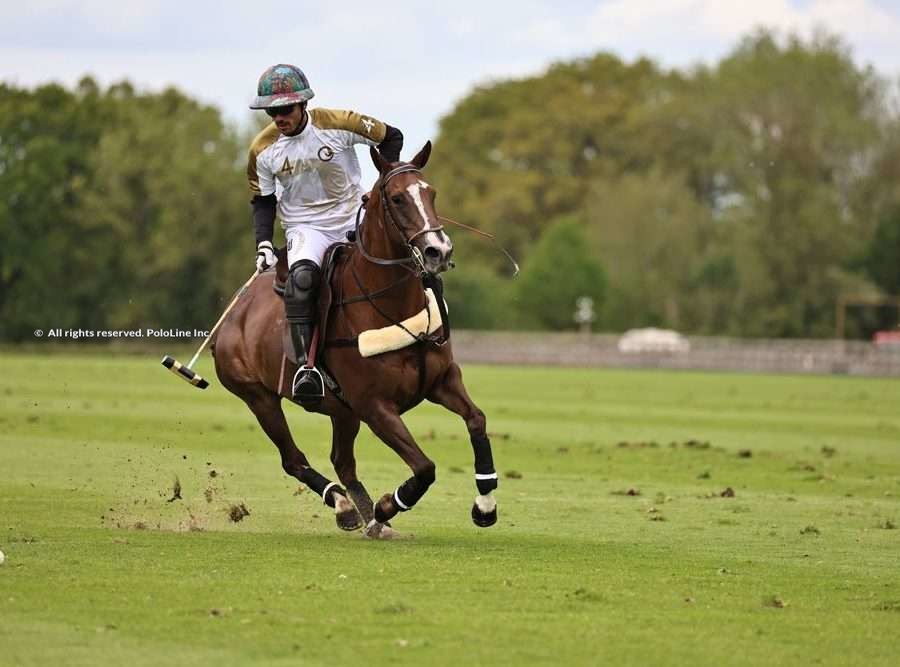Knowing how to incorporate pauses in the game of polo is a skill that few players have. The ability to pause differentiates a player from the crowd. As polo is a dynamic sport with an ever-changing nature, pausing during the game gives it a supernatural quality.
While there are plays that are “planned” or “premeditated”, there are a so-called transition phases in attack and defence, a change in direction of play that happens when the ball marks different lines. This is what keeps players in a constant state of alertness.
The game at times turns vertiginous, especially when the level is high, and that is when players should PAUSE, taking time and space to wait for the play to be defined, and thus putting the ball in the place they want to.
Not pausing means losing clarity of the game and leads to errors of play. There are different situations where pausing is necessary:
- When a player is going at speed alongside a teammate that is moving ahead fighting for the ball, in a hook or a ride off, for example, they must pause, waiting for the resolution of the play.
- When a player is moving near the boards and a teammate is moving at speed through the center of the field heading for goal, they must pause before making the pass.
- When a player is on a solo run towards goal with sufficient space from their opponents, they must pause to ensure they score the goal.
- When a player decides to pass the ball to a teammate by backing the ball, they must wait for them to shake their opponents and get into position, thus, they pause.
- When a player decides to hit the ball to goal from a long distance, they must pause, getting the horse into position and taking their time to execute the play.
- When an opponent moves towards the ball at speed, without having the line, a player must pause to mark the foul and avoid an accident.
- When a player is in possession of the ball and has space from the rest, they must pause to position themselves towards their goal, with chances of striking the ball accordingly.
- When the game resumes from the back line and a player taps the ball slightly, they must pause to lift their gaze, allowing their teammates to find space and get into position to receive the ball, then choosing which is best suited to receive the pass.
- When a teammate, being the last man, is going to back the ball, a player should cover them by pausing until the ball is sent to their other two teammates. If the player doesn’t pause, and the teammate misses the ball, then the opponents have a chance of scoring.
While I always recommend that the ball is played quickly, trying to use the element of surprise in favor, there are special circumstances, like the ones mentioned above, that call for a pause. In these cases, pausing does not mean delaying the game – on the contrary, it assures a good game.
In order to pause, a player should always know where the ball, their teammates and the opponents are positioned, and, in the case of playing the ball, they should know where they want to send it. Arriving at the play rushed, without mapping out the situation and the outcome of the play is not beneficial for anyone. Pausing alludes to the quality of a player, of an intimate knowledge of the game, of anticipation, and also preserves the energy of the horse.
It is common to observe players not pausing and thus not achieving their desired outcome, whether the field runs out, or because they end up doing a failed pass or shot at goal.
For a player to improve their game, they must learn to pause when it is called for during the game.
Special thanks to Dr. Guillermo Villanueva for his cooperation on this article.
